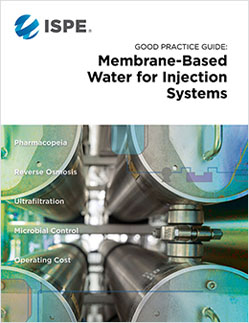This guide provides expert guidance on the design, operation, maintenance and quality aspects of membrane-based water-for-injection (WFI) systems, including generation, storage and distribution.
The information presented in this guide is a combination of proven technological solutions, microbial control methods, process analytical technology and operations and maintenance practices.

“Membrane-based WFI is a state-of-the-art method that should be used whenever possible,” said guide co-lead Fritz Roeder, Senior QA Manager, Merck Healthcare KGaA. “This Guide will be useful to engineers, production, quality assurance and quality control professionals and regulators who have some water expertise.”
For nearly a century, the production of WFI was universally accepted to be distillation-based. As the emphasis on costs and environmental concerns has grown, pharmacopeias around the world have focused on the quality attributes of WFI to allow for consideration of other production technologies.
In 2017, the European Pharmacopoeia joined the US, Japan and many other regulatory bodies (except for China) in accepting membrane-based technologies for WFI production. It is recommended that the readers have a baseline knowledge of pharmaceutical water systems and their unit operations prior to reading this guide.
“This Good Practice Guide provides an objective discussion of current best practices as well as critical technical information pertaining to membrane-based WFI systems,” said guide co-lead Brian Pochini, Principal Engineer, Sanofi.
“The guide reflects an industry wide collaborative effort by a diverse range of experts that include equipment providers, engineering firms, consultants and pharmaceutical manufacturers to present a holistic view of the pros and cons of membrane-based WFI systems.”
